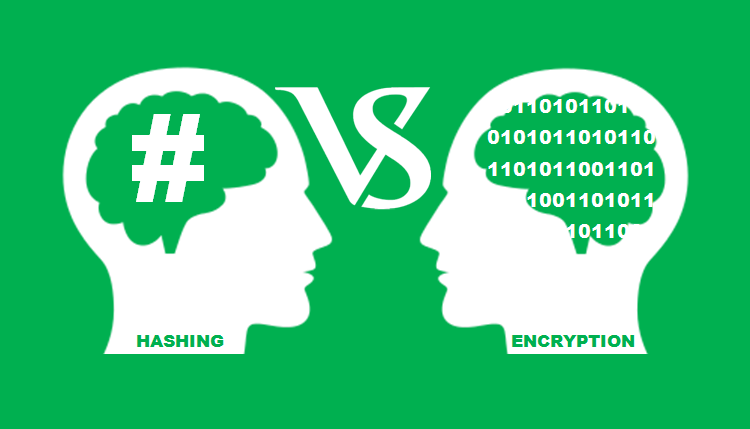Difference between Hashing and Encryption

Hashing and encryption are both cryptographic techniques used to protect data and ensure its integrity and security, but they serve different purposes and have distinct characteristics. Here are the key differences between hashing and encryption:
-
Purpose:
- Hashing: The primary purpose of hashing is to generate a fixed-size representation of data, known as a hash value, that uniquely identifies the input data. Hashing is commonly used for data integrity verification, password storage, digital signatures, and indexing data structures.
- Encryption: The primary purpose of encryption is to convert data into a ciphertext (encrypted form) using an encryption algorithm and a key. Encryption is used to protect the confidentiality of data during transmission or storage and ensure that only authorized parties can access and decrypt the data.
-
Output:
- Hashing: The output of a hash function is a fixed-size string of characters, known as a hash value or hash code. Hash values are typically represented as hexadecimal or alphanumeric strings and are of a fixed length, regardless of the size of the input data.
- Encryption: The output of encryption is ciphertext, which is the encrypted form of the original plaintext data. The ciphertext is typically larger than the plaintext and appears as a random and unintelligible sequence of characters or bits.
-
Reversibility:
- Hashing: Hashing is a one-way process, meaning it is computationally infeasible to reverse or derive the original input data from the hash value. Hash functions are designed to be irreversible, ensuring that hashed data cannot be easily reconstructed.
- Encryption: Encryption is a reversible process, meaning the original plaintext data can be recovered from the ciphertext using the decryption algorithm and the appropriate decryption key. Encryption is designed to be reversible to allow authorized parties to access the original data.
-
Use Cases:
- Hashing: Hashing is commonly used for data integrity verification, where hash values are calculated for data before and after transmission or storage to ensure that the data has not been tampered with. Hashing is also used for password storage, digital signatures, and indexing data structures.
- Encryption: Encryption is used to protect the confidentiality of data during transmission or storage. It is commonly used for secure communication (e.g., HTTPS, SSL/TLS), data encryption at rest (e.g., disk encryption), securing sensitive information (e.g., credit card details), and protecting personal privacy.
-
Security Properties:
- Hashing: Hash functions aim to achieve properties such as collision resistance (minimizing the likelihood of two different inputs producing the same hash value), preimage resistance (making it computationally infeasible to find the original input from the hash value), and second preimage resistance (making it computationally infeasible to find a different input that produces the same hash value).
- Encryption: Encryption algorithms aim to achieve properties such as confidentiality (protecting the data from unauthorized access), integrity (ensuring that the data has not been tampered with), and authenticity (verifying the identity of the sender or source).
In summary, hashing and encryption are cryptographic techniques with distinct purposes and characteristics. Hashing is primarily used for data integrity verification and generating fixed-size representations of data, while encryption is used for protecting the confidentiality of data during transmission or storage.
Thank you,
